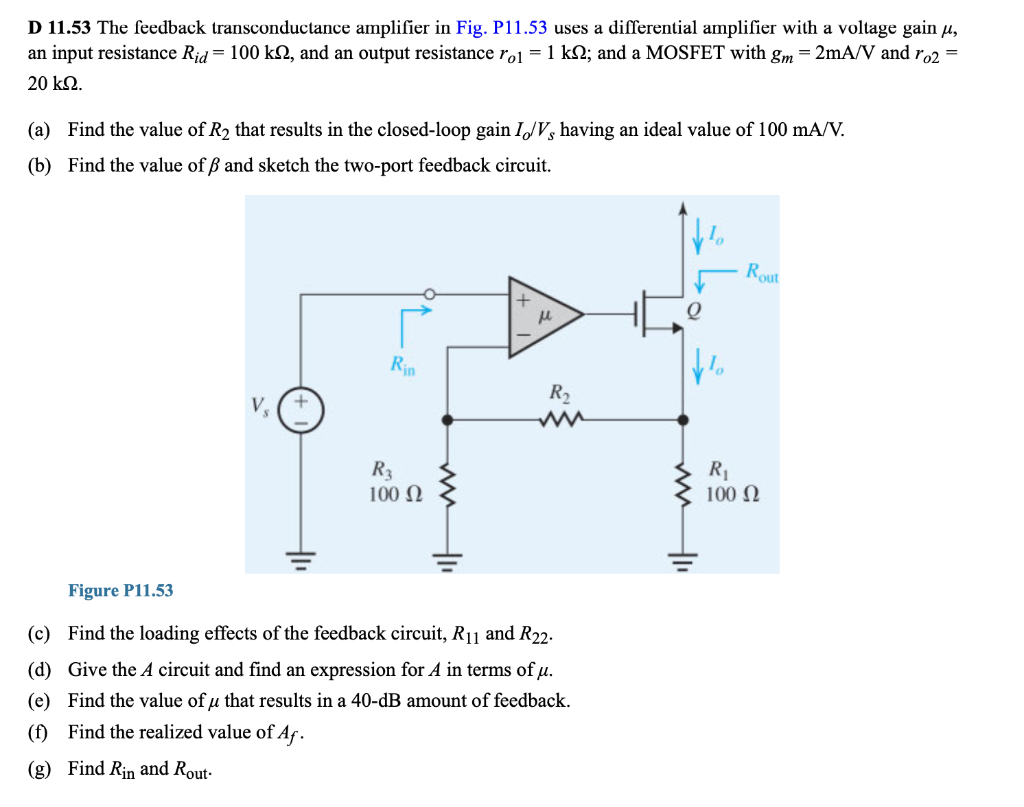Home /
Expert Answers /
Electrical Engineering /
d-11-53-the-feedback-transconductance-amplifier-in-fig-p11-53-uses-a-differential-amplifier-with-pa936
(Solved): D 11.53 The feedback transconductance amplifier in Fig. P11.53 uses a differential amplifier with ...
D 11.53 The feedback transconductance amplifier in Fig. P11.53 uses a differential amplifier with a voltage gain \( \mu \), an input resistance \( R_{i d}=100 \mathrm{k} \Omega \), and an output resistance \( r_{o 1}=1 \mathrm{k} \Omega \); and a MOSFET with \( g_{m}=2 \mathrm{~mA} / \mathrm{V} \) and \( r_{o 2}= \) \( 20 \mathrm{k} \Omega \). (a) Find the value of \( R_{2} \) that results in the closed-loop gain \( I_{o} / V_{s} \) having an ideal value of \( 100 \mathrm{~mA} / \mathrm{V} \). (b) Find the value of \( \beta \) and sketch the two-port feedback circuit. Figure P11.53 (c) Find the loading effects of the feedback circuit, \( R_{11} \) and \( R_{22} \). (d) Give the \( A \) circuit and find an expression for \( A \) in terms of \( \mu \). (e) Find the value of \( \mu \) that results in a \( 40-\mathrm{dB} \) amount of feedback. (f) Find the realized value of \( A_{f} \). (g) Find \( R_{\text {in }} \) and \( R_{\text {out. }} \).
